Brightness Adaptation And Discrimination
Brightness adaptation and discrimination. The eyes ability to discriminate black and white at different intensity levels is an important consideration in presenting image processing result. Brightness Adaptation Discrimination The human visual system can perceive approximately 1010 different light intensity levels. On the order of 1010 _ from the scotopic threshold to the glare limit.
At this adaptation the eye can perceive brightness in the. Range of Light Intensity Levels 1010. Brightness Adaptation and Discrimination The eyes ability to discriminate between different intensity levels is an important consideration in presenting image processing results.
Similarly the perceived intensity of a region is related to the light intensities of the regions surrounding it. ¾ In fact the subjective brightness is a logarithmic function of the light intensity incident on the. The range of light intensity levels to which the human visual system can adapt is enormouson the order of 1010 from the scotopic threshold to the glare limit.
THE EFFECT OF ADAPTATION ON DIFFERENTIAL BRIGHTNESS DISCRIMINATION BY K. It accomplishes this large variation by changes in its overall intensity. Discriminating the degree of brightness however depends on the visual acuity of the observer the wavelength of light and the sensitivity to light and color as perceived.
Click on the article title to read more. Scotopic Threshold to Glare Limit 106. Digital images are displayed as a discrete set of intensities.
At any time instance we can only discriminate between a much smaller number brightness adaptation. 213 Brightness Adaptation and Discrimination Because digital images are displayed as a discrete set of intensities the eyes ability to discriminate between different intensity levels is an important con-sideration in presenting image-processing resultsThe range of light intensity lev-. Of ECE Canara Engineering College 9591.
Brightness adaptation and discrimination Digital images displayed as a discrete set of intensities Range of human eye is about 1010 different light intensity levels from scotopic threshold to the glare limit Fig 24 Visual system cannot operate over the enormous range simultaneously. BRIGHTNESS ADAPTATION AND DISCRIMINATION Range of light intensity levels to which HVS human visual system can adapt.
Brightness Adaptation and Discrimination.
Similarly the perceived intensity of a region is related to the light intensities of the regions surrounding it. On the order of 1010 _ from the scotopic threshold to the glare limit. Intensity discrimination and its relation to the adaptation of the eye. At any time instance we can only discriminate between a much smaller number brightness adaptation. The breakdown of a colour match with high intensities of adaptation. Brightness Adaptation Discrimination The human visual system can perceive approximately 1010 different light intensity levels. Photopic Vision Subjective Brightness Brightness perceived by Vision Log function of Light Intensity. Brightness adaptation and discrimination Digital images displayed as a discrete set of intensities Range of human eye is about 1010 different light intensity levels from scotopic threshold to the glare limit Fig 24 Visual system cannot operate over the enormous range simultaneously. Brightness Adaptation and Discrimination.
The ability to differentiate the level of brightness. The effect of adaptation on differential brightness discrimination. Brightness Adaptation Discrimination The human visual system can perceive approximately 1010 different light intensity levels. The range of light intensity levels to which the human visual system can adapt is enormouson the order of 1010 from the scotopic threshold to the glare limit. Brightness Adaptation Discrimination How do we perceive the intensity in an image. Scotopic Threshold to Glare Limit 106. PMC free article Wright WD.




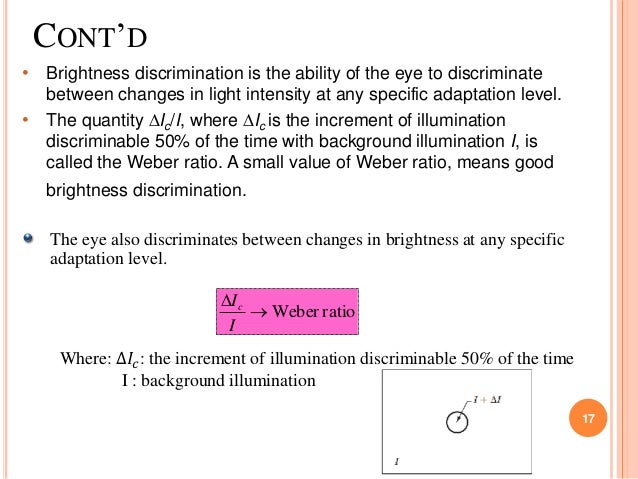
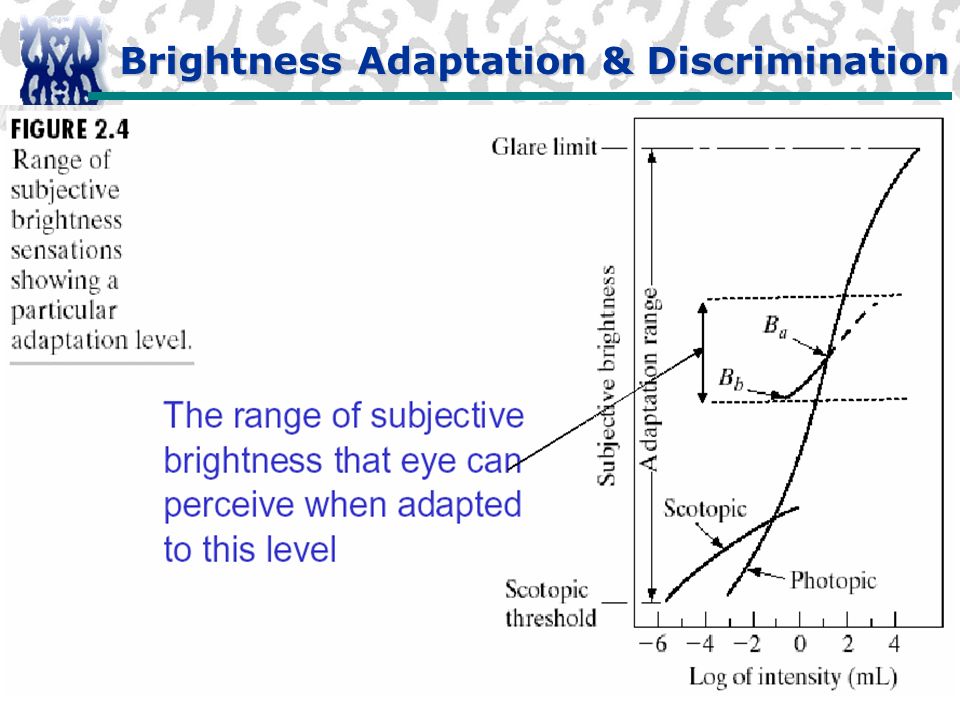





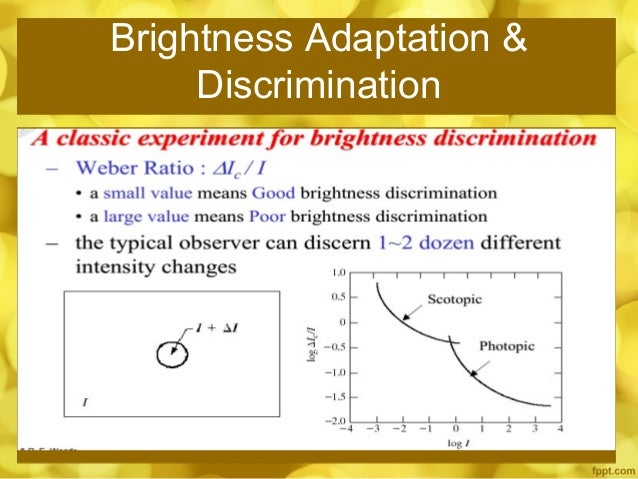
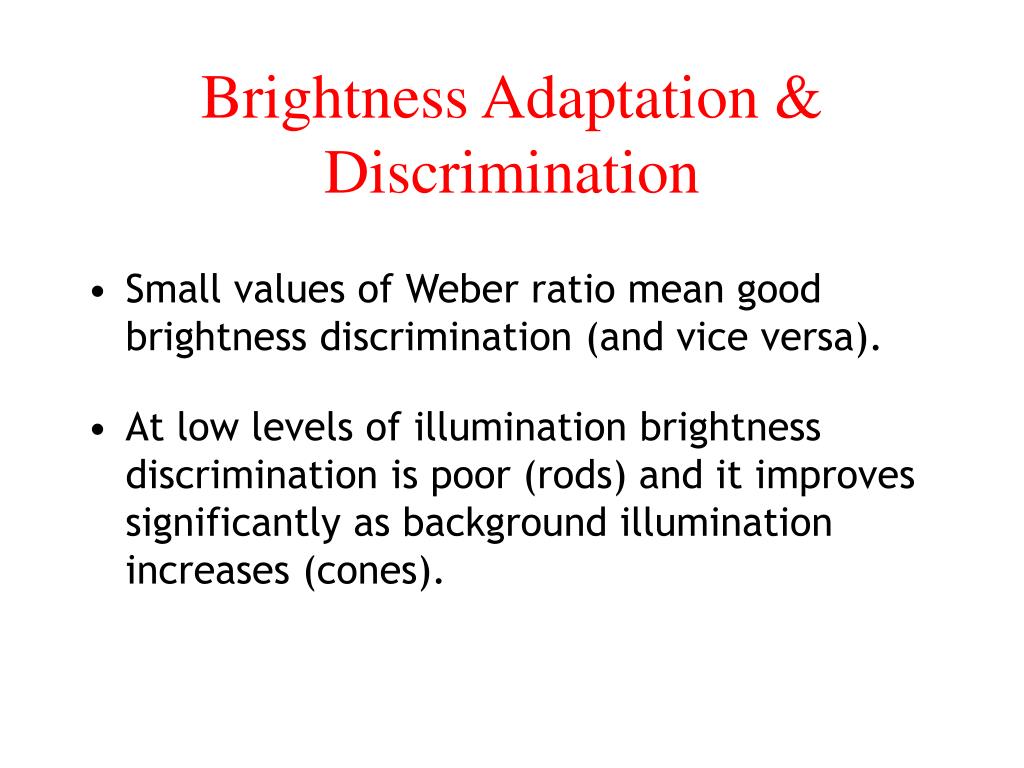













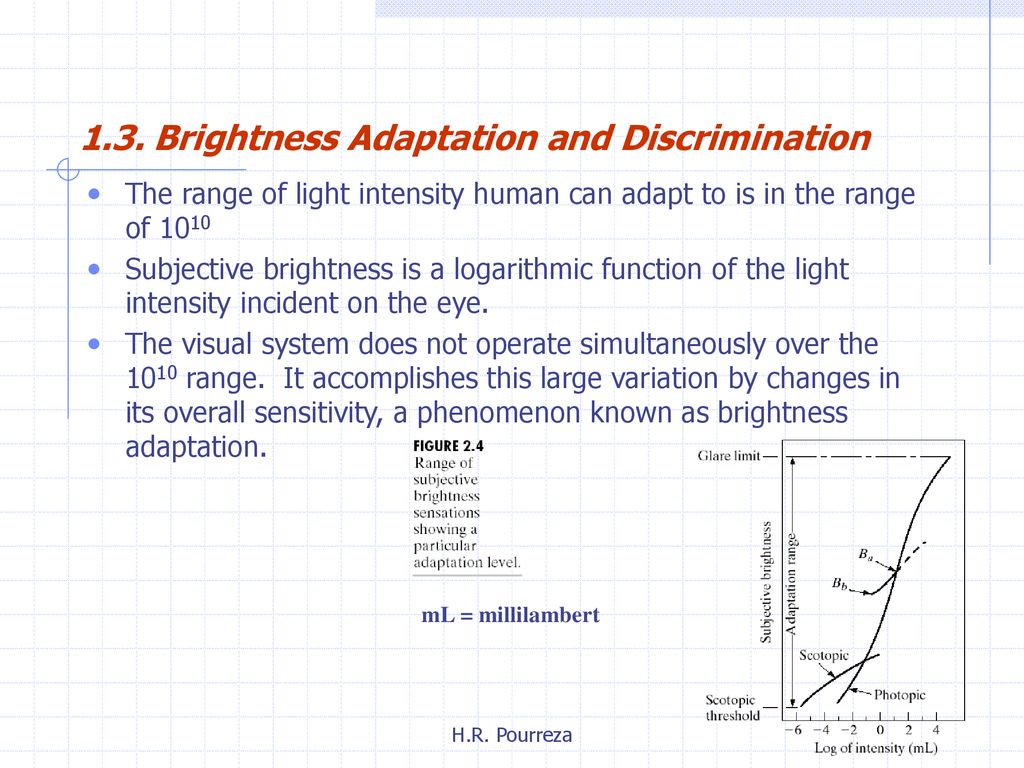
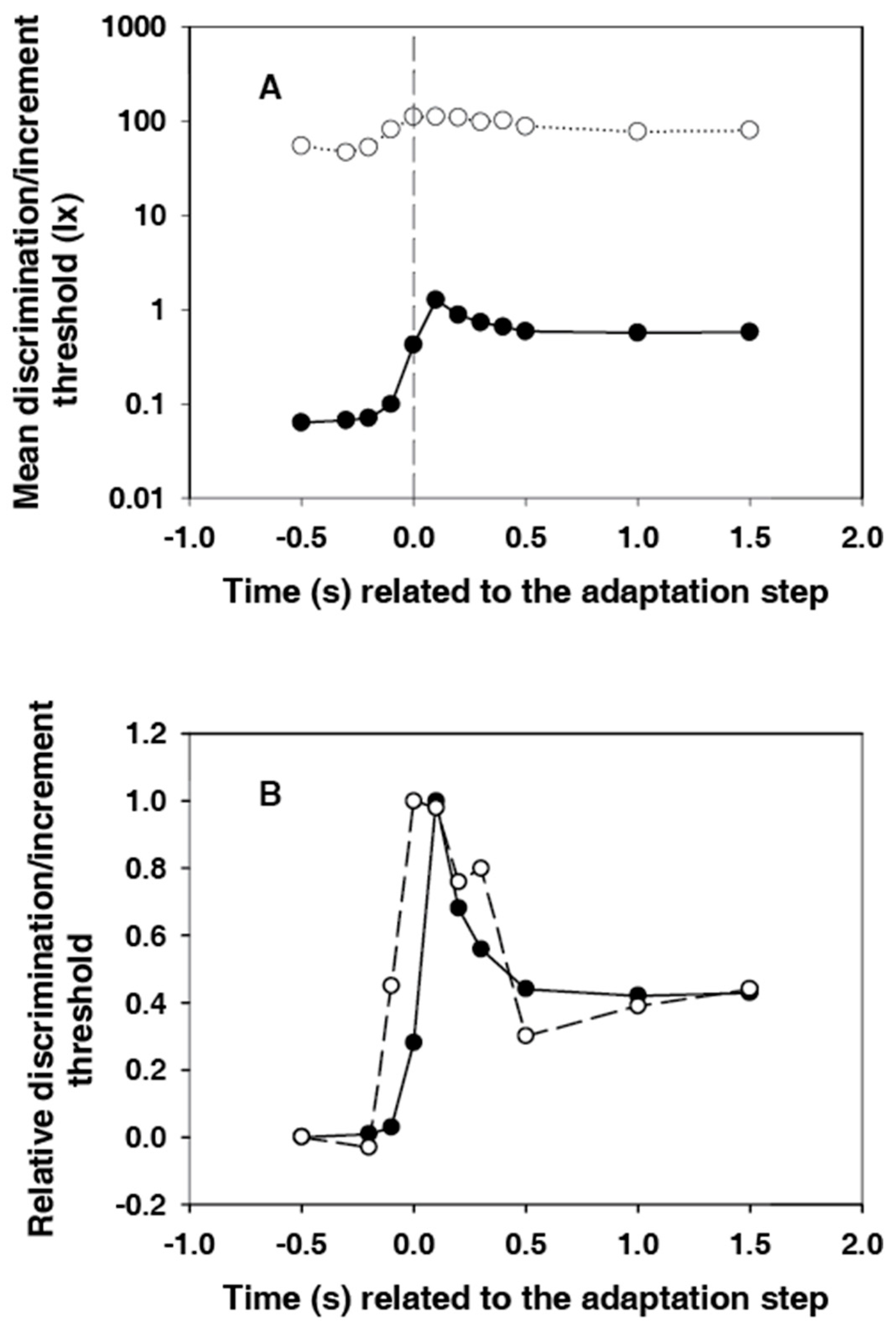





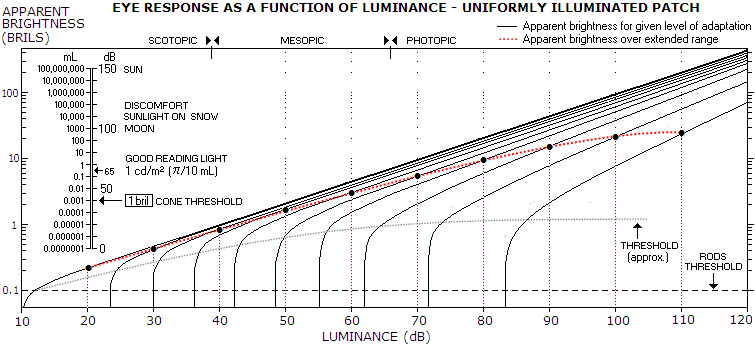
Post a Comment for "Brightness Adaptation And Discrimination"